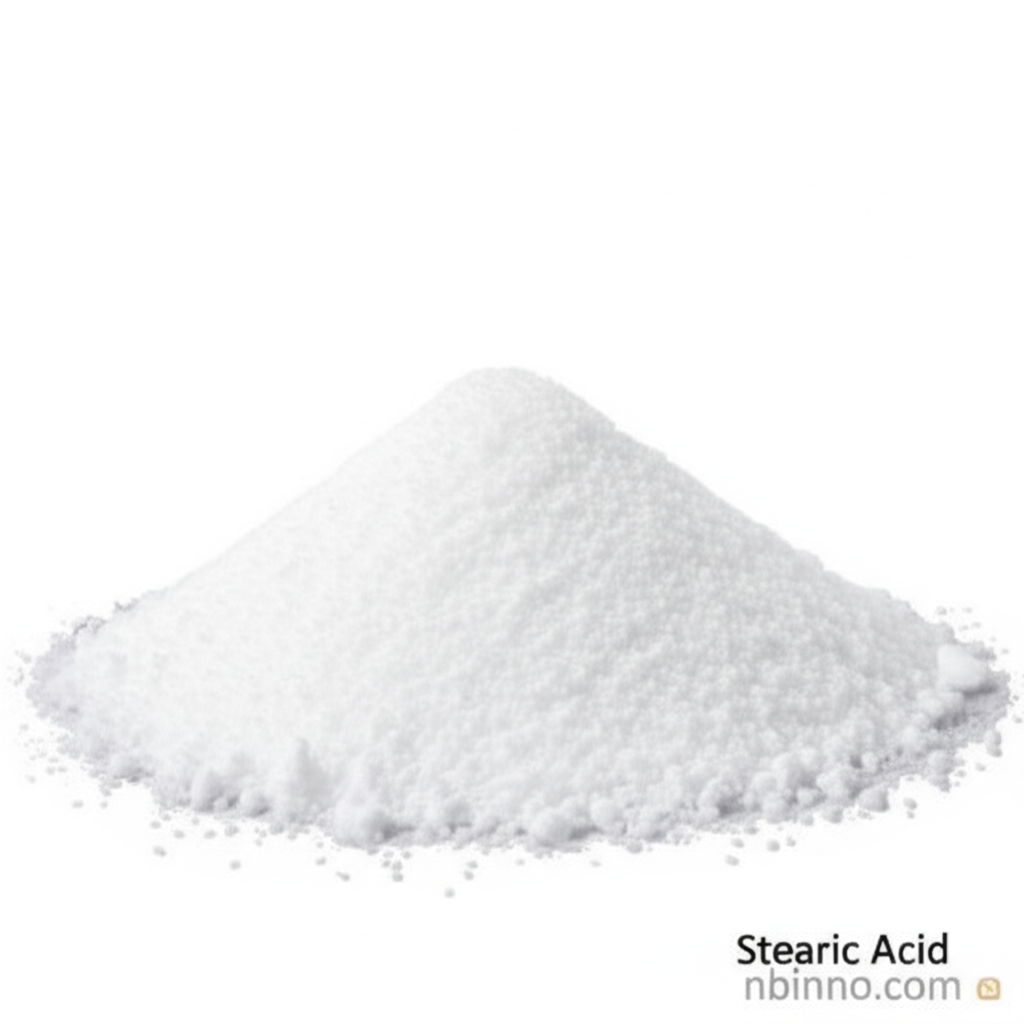Stearic Acid: Enhancing PVC Plastic Processing
Discover the essential role of stearic acid in optimizing PVC manufacturing for superior product quality and efficiency.
Get a Quote & SampleProduct Core Value

Stearic Acid
Stearic acid is a crucial additive in the plastic industry, particularly for PVC. Its unique properties as both an internal and external lubricant significantly improve the processing of PVC compounds. It enhances melt flow, reduces friction during extrusion and molding, and aids in mold release, leading to smoother production processes and higher quality finished products. Furthermore, its role as a heat and color stabilizer is vital for preventing degradation and discoloration in PVC products, thereby extending their lifespan and maintaining aesthetic appeal.
- Discover the benefits of stearic acid for plastics, enhancing flexibility and reducing brittleness in final products.
- Learn how stearic acid functions as a PVC internal lubricant, improving melt flow and reducing processing temperatures for better outcomes.
- Understand the critical role of stearic acid as a PVC heat stabilizer, crucial for preventing degradation and discoloration in plastic materials.
- Explore the advantages of using renewable additives for plastics, with stearic acid being a prime example of a sustainable and effective choice.
Advantages of Using Stearic Acid
Improved Processability
The lubricating properties of stearic acid allow for enhanced flow of the polymer melt during processing, leading to better mold filling and easier extrusion. This directly translates to higher-quality finished plastic products.
Enhanced Properties
By acting as a plasticizer, stearic acid can modify the mechanical properties of the plastic, making it more flexible and resistant to brittleness, thereby improving its overall performance and durability.
Thermal and Color Stability
Stearic acid acts as a cost-effective stabilizer for PVC, enhancing its thermal stability and prolonging its lifespan. It also serves as a color stabilizer, ensuring the final plastic product retains its intended hue.
Key Applications
PVC Processing
As a primary PVC internal lubricant, stearic acid facilitates smoother extrusion and molding, improving the surface finish and dimensional stability of PVC products.
Plastics Manufacturing
Beyond PVC, stearic acid enhances the processability and properties of various plastics, acting as a release agent, stabilizer, and plasticizer.
Rubber Industry
In rubber vulcanization, stearic acid acts as an accelerator activator, improving the durability and elasticity of rubber compounds.
Cosmetics and Pharmaceuticals
Stearic acid is utilized in cosmetics for its moisturizing and emulsifying properties, and in pharmaceuticals as a lubricant and coating material for tablets.
